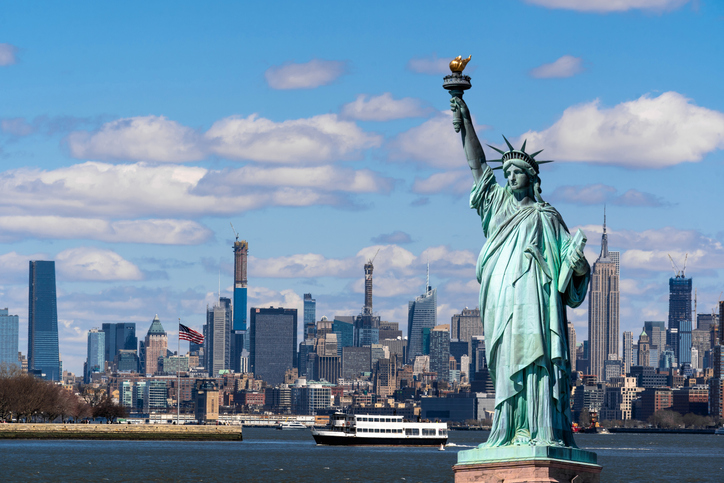New York City suffers with fewer police, slower response times, and more crime, but some politicians still support police defunding.
By Eileen Griffin
With fewer police officers and high crime rates, response times have slowed for New York City residents.
Police officers are no longer able to respond to crime as quickly as they have in the past, the New York Post reports. Since January 2018, police response times for a wide range of crimes have risen dramatically.
Slower response times means that criminal cases are less likely to be resolved by the police. A person reporting a crime is unlikely to wait an extensive amount of time for a police officer to arrive and take his or her statement.
If the police respond within 15 minutes, 90 percent of the time the caller is easily located. That percentage goes down to approximately 30 percent if the police take over 2 hours to arrive.
Underreporting crimes has long been a problem. The delayed response time makes it that much more challenging to get people to even bother contacting the police if they know they have to wait over 2 hours for a response.
Two problems are converging resulting in this situation. There are fewer police officers available in New York, largely due to the defund the police movement, and crime is exploding with soft-on-crime politicians and prosecutors.
The NYPD has reduced its police staffing by 7 percent. With this smaller force, the police department has been tasked to handle over a million more calls than they had in 2016.
“Like other urban departments around the country, the NYPD is struggling to keep officers and recruit new ones, which is all well and good as far as the anti-police radicals on the City Council are concerned,” wrote Manhattan Institute fellow Rafael A. Mangual in the New York Post.
Progressive members of New York’s city council are unlikely to support any increase in the budget for the police department.
Councilwoman Tiffany Cabán, who describes herself as a queer abolitionist and a socialist on X, continues to be antagonistic to additional police officers. Abolitionists typically advocate for the elimination of criminal punishment and the eradication of prisons.
In January of this year, Mayor Eric Adams (D) announced he was adding 600 new police officers to the NYPD. Cabán posted a statement on X criticizing the Mayor’s decision.
“The Mayor is reversing some budget cuts,” Cabán wrote. “Our libraries are still closed on weekends. Our schools and students are still suffering. Sanitation services are still reduced and less frequent. No community composting. Those cuts stand. Whose cuts are getting reversed? The NYPD, of course.”
Responses to her statement on X include Robert Castle, who wrote, “Next time that you get mugged, call a librarian.” Al, a New York City resident wrote, “Fund the NYPD. Defund the NY City Council.” New York City resident and songwriter Eytan Mirsky wrote, “We are well aware from your run for D.A. in Queens that you do not believe that criminals should encounter any hindrance.”
Progressive city council members continue to obstruct efforts to bolster police presence while left-leaning publications such as The New York Times claim that crime is dropping.
New York City saw significant drops in the number of major crimes such as shootings and murders, but the number of felony assaults and car thefts remain high, the outlet reports.
A new Manhattan Institute brief says that Democrats and Republicans both use crime as a political issue. They each claim that their states are safer than the opposition-led areas. Both sides of the debate can support their position by using data to make the numbers appear to be whatever boosts their argument.
The authors of the brief, Manhattan Institute scholars George J. Borjas and Robert VerBruggen, researched the actual crime data to determine if blue states or red states have the worse crime problems.
“Democrats say that lax Republican gun laws drive up murder; Republicans say that Democratic mishandling of policing and prosecution is what really matters,” wrote Borjas and VerBruggen.
On the surface, the data can support that position that blue states are safer than red states but blue counites are more dangerous than red counties. When the data is segmented using demographic differences, the picture is entirely different.
“Once we adjust for these demographic and economic differences, there is no relationship between the Trump share of the vote and homicides at the county or at the state level,” Borjas and VerBruggen wrote.
Using the data differently or failing to control for relevant demographics such as the average age of residents in a particular location can change the picture, the authors conclude.
“The point is not that any particular model is the right one but that confounding factors obviously drive a lot of these gaps in violence, and subjective decisions about how to address that fact can make the data say different things.”
Rather than continuing to debate whether red states or blue states are more crime ridden, debating the policies will better serve communities and help keep residents safe.
“Let’s have those discussions, rather than interminably going back and forth over whose constituents are more violent,” Borjas and VerBruggen wrote. “The U.S. certainly has more than enough murders to go around.”
For more great content from Budget & Tax News.
